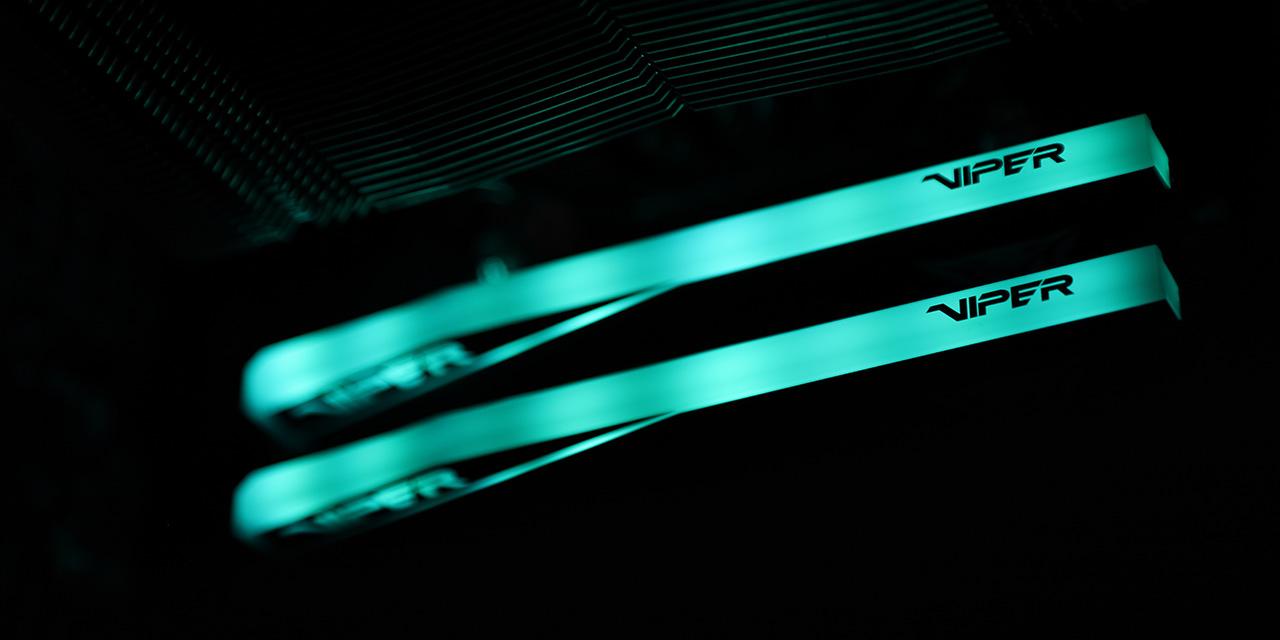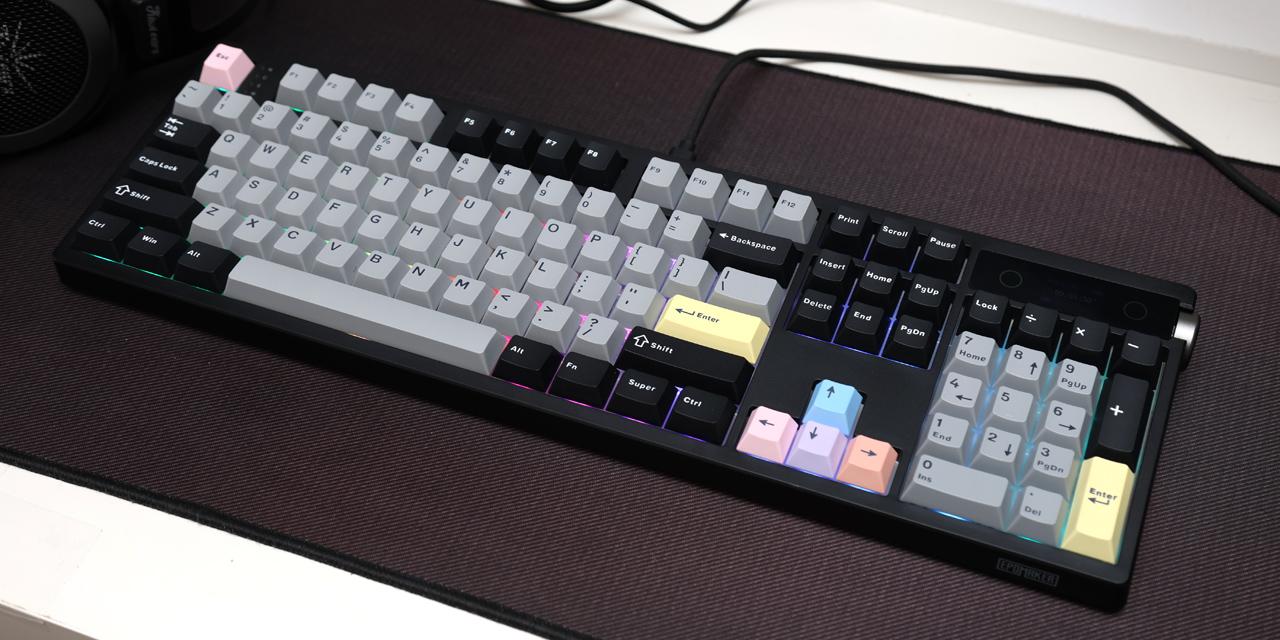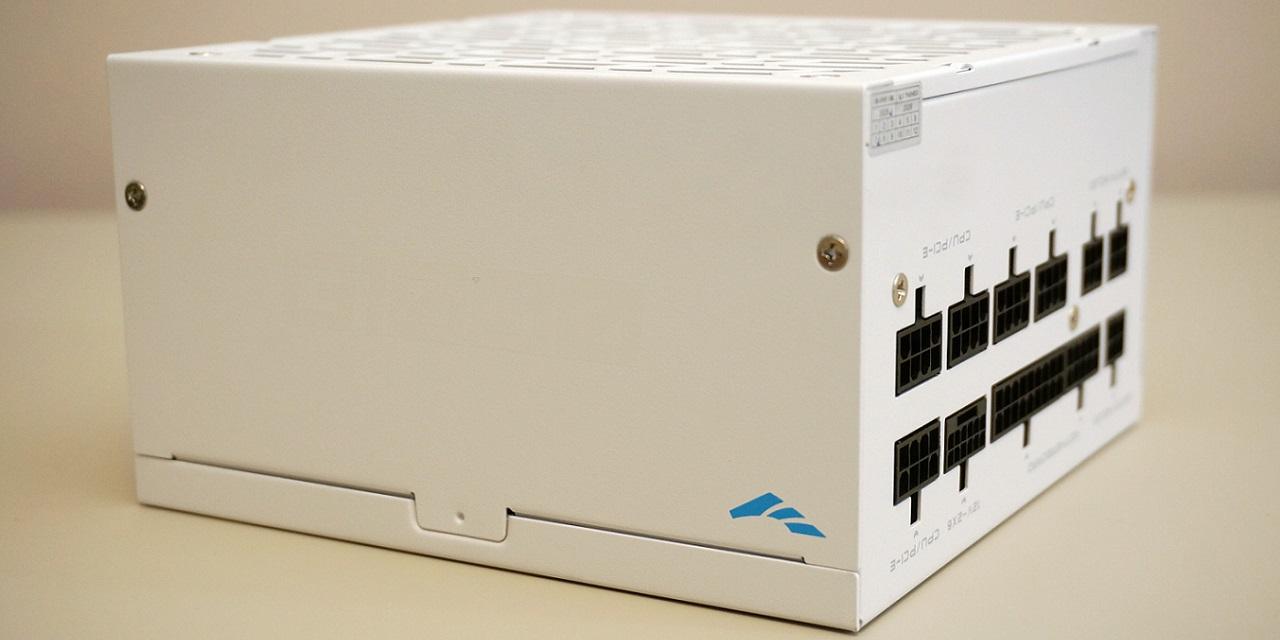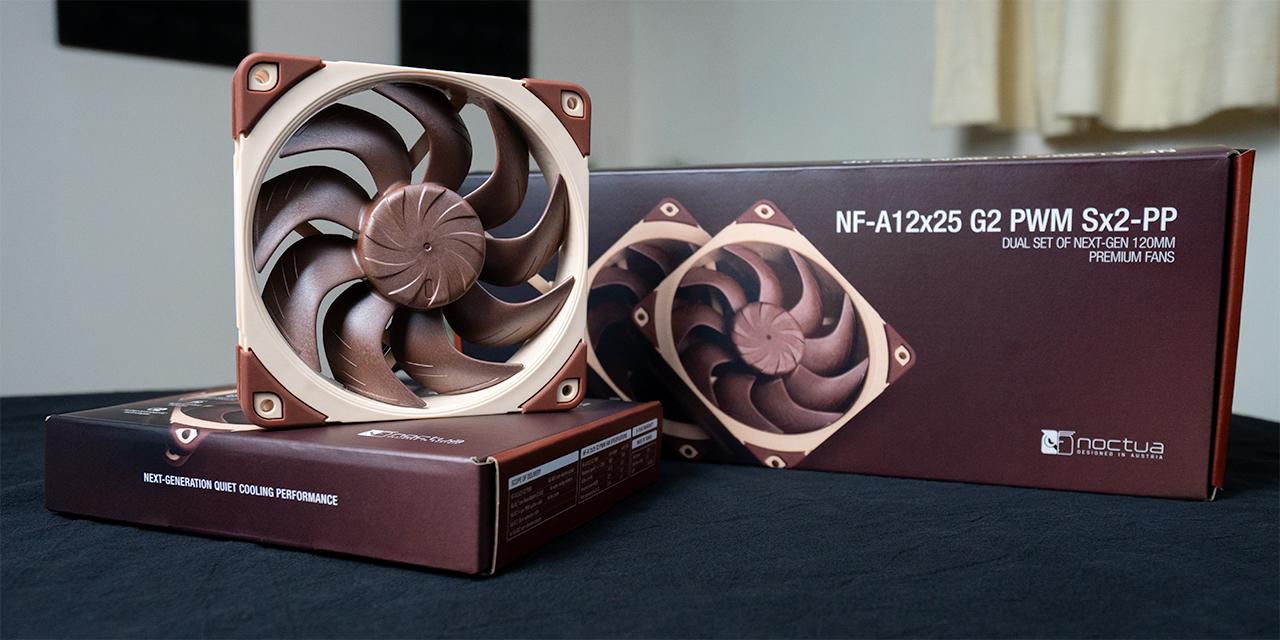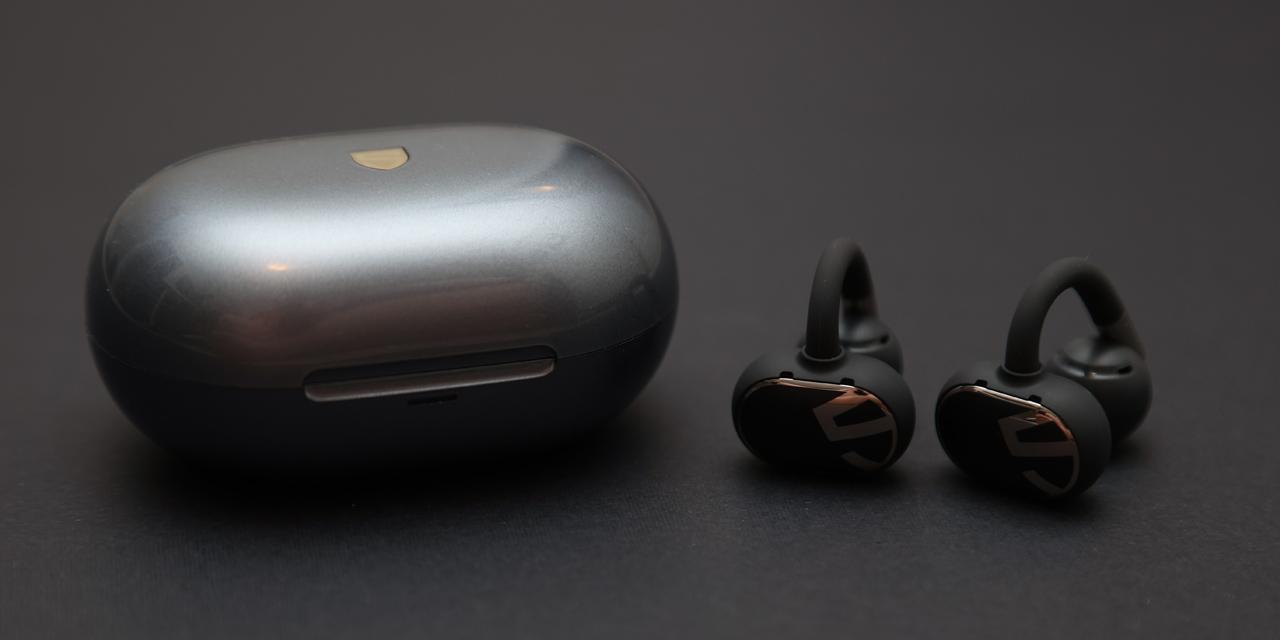Page 2 – A Closer Look – Hardware and Software

The Epomaker P65 has a 65% layout, providing a compact yet usable layout. Compared to a full-size keyboard, the number pad, function row, and certain navigation keys are omitted. It has a total of sixty-six keys and a volume knob. The Epomaker P65 comes in two colorways of either black or khaki, as well as a choice between the Epomaker Zebra or Wisteria linear mechanical switches. Today, we have the P65 in khaki with Zebra switches. In many ways, this keyboard is similar to its slightly larger brother, the Epomaker P75.
The body of the Epomaker P65 is made of CNC machined aluminum with a gray-gold colored anodization. Both the top frame and the bottom chassis are machined aluminum, which is usually found in more premium keyboard builds. The dimensions of the keyboard are 320mm wide, 116mm deep, and ranges from 22mm tall at the front to 43mm tall at the back. The typing angle is approximately 6 degrees, which is comfortable if I use a wrist rest to accommodate the front height of the keyboard. The compact size allows for more mousing area on the right side of the keyboard. The keyboard comes in at a weight of 1.3kg. The overall construction of the P65 feels solid. There is no flex in the chassis given the full aluminum build. The edges and seams are smooth, and the anodization finish is immaculate, giving the keyboard an air of quality. The top right of the keyboard has an aluminum volume knob with the same finish. The rotation has slight feedback on each detent.

The keycaps are made with PBT double-shot plastic. PBT plastic resists wear and shine compared to ABS plastic. It typically has a lower pitched typing sound. The double-shot black colored legends will never fade, as they are molded with a different color plastic underneath the keys. The legends are clear and mostly crisp looking. Some of the keys do have slightly inconsistent thickness in the lettering, which is not ideal. It could suggest a less accurate or worn-out plastic injection mold. The alphanumeric keys are in an off-white color reminiscent of old personal computers, while the modifier keys are in a light gray color. The keycaps are sculpted in the Cherry-profile, and has the North American QWERTY ANSI layout. They feel solid and have good quality at this price point. For those who want to personalize the keyboard with their own keycaps, there is a non-standard 1.75U right Shift, 6.25U space bar, and 1.25U bottom row modifiers. The navigation keys featured are Delete, Page Up, and Page Down on the right side.

Looking around the sides of the keyboard, the front edge is flat and plain with the top case visible. On the sides, there is minimal sculpting at the rear of the base providing a little bit of artistic flare. The back side of the keyboard is where more business is happening. When viewing from the back, the right-most side has a USB Type-C port for wired connectivity. Left of the port is the tri-mode connectivity switch. It can be set to Bluetooth, wired, or 2.4GHz modes. Beside the switch is a magnetic slot for the wireless 2.4GHz USB Type-A dongle.

On the bottom of the keyboard, the Epomaker logo is engraved in the center and looks sharp. Four pill-shaped rubber feet are laid horizontally on each corner. Along the edges are six inset holes that have golden-colored 2mm hex screws that hold the keyboard together. There are no kickstand feet on the Epomaker P65, so what you see is what you get in terms of height.
The typing experience of the Epomaker P65 is quite pleasant. The Epomaker Zebra mechanical switches are very smooth. They have a light initial force with a heavier bottoming out. The P65 uses a polycarbonate plate with gasket mounts. This gives the board a bit of flex when typing. The overall typing feel is as if the keyboard is pulling you in slightly with each keystroke, like walking barefoot on wet sand, or the padded feeling of a lush lawn. As for the sound, the P65 is surprisingly loud. It could be described as marbly or glassy sounding, but there is perhaps some case resonance not prevented by the PET pad layer that results in a metallic sounding frequency. With some adjustment of the foam and pad materials inside the board, I think the higher pitched frequencies could be reduced. Each keystroke sounds sharp, and to my ears it is a little piercing like high heels on a marble floor. The P65 does not have a bad sound profile, but it could perhaps be a little fatiguing for those with more sensitive hearing. The stabilizer keys are very well tuned. Epomaker has got their stabilizer game locked down, as there is no rattle whatsoever.

As mentioned earlier, the Epomaker P65 has tri-mode connectivity. It can be connected through the cable provided for a trusty wired connection, or wirelessly through Bluetooth and 2.4GHz. For more casual use, the Bluetooth 5.0 connection polls at 125Hz with a latency of 15ms, and can connect up to three devices. For higher performance, the 2.4GHz connection through the provided USB Type-A dongle will poll at a rate of 1000Hz with 5ms latency. There is a 4000mAh inside the P65 to power wireless connectivity. I was unable to find official numbers for the estimated battery life, but in my case, I got about four days of moderate use on 2.4GHz. This was with the LED lighting set to white on max brightness. The caveat here is the lights do not stay through the full capacity of the battery. Under 30 to 40% charge, the RGB LED lighting will turn off, and the FN key will flash with a red light indicating low battery. The keyboard also has a light sleep mode to conserve battery life, where the lighting will automatically switch off after three minutes and turn back on when the keyboard is used again.
The Epomaker P65, as alluded to, has RGB LED lighting. The LEDs are south-facing, which is often preferred by enthusiasts as they do not clash with Cherry profile keycaps. The LEDs can be customized by pressing the Fn key in conjunction with the preset buttons. Lighting effects are pre-programmed in various sequences, and they can be further customized by adjusting speed, color hue, saturation, and brightness. The lighting can also be toggled completely off. Certain built-in settings will also change the lighting of certain keys to indicate status. Caps Lock, for example, will turn white if on. Battery percentage can be checked by holding Fn + space bar, and the corresponding number lights will light up to indicate each 10% of battery life.
A couple of other built-in features are worth noting. The P65 features N-key rollover or NKRO. This allows the user to press any number of keys simultaneously and still have the keyboard register the inputs. It can also be set to 6-key rollover, or 6KRO, to limit simultaneous keypresses. Through the function layer by using the Fn key, other features and settings can be accessed. F1 through F12 can be used by holding Fn and the corresponding number key from one through equal key. This can be swapped for built-in Windows controls or even be swapped for Mac settings. For more customization of the keyboard keys, this can be done through the open-source VIA software.

Rather than using proprietary software to customize keyboard functionality, the Epomaker P65 is programmed through QMK/VIA. For most users, VIA will be the easiest to use, as it is a web-based graphical user interface that allows users to modify what the keys do. Unfortunately, the Epomaker P65 is not immediately recognized by VIA, and requires the use of a .JSON file that can be found on Epomaker’s website. Personally, I like the use of QMK and VIA, as this allows users to deeply customize their keyboard. VIA support allows users to quickly and easily program their keyboard without installing vendor-specific software. The downsides are perhaps the elevated complexity of figuring how to configure the keyboard to their liking. For the most part, VIA is straightforward in dragging and dropping the desired key on the displayed keyboard, but more special settings will take a bit of learning.
Page Index
1. Introduction, Packaging, Specifications
2. A Closer Look - Hardware and Software
3. A Closer Look – Disassembly and Internals
4. Conclusion
